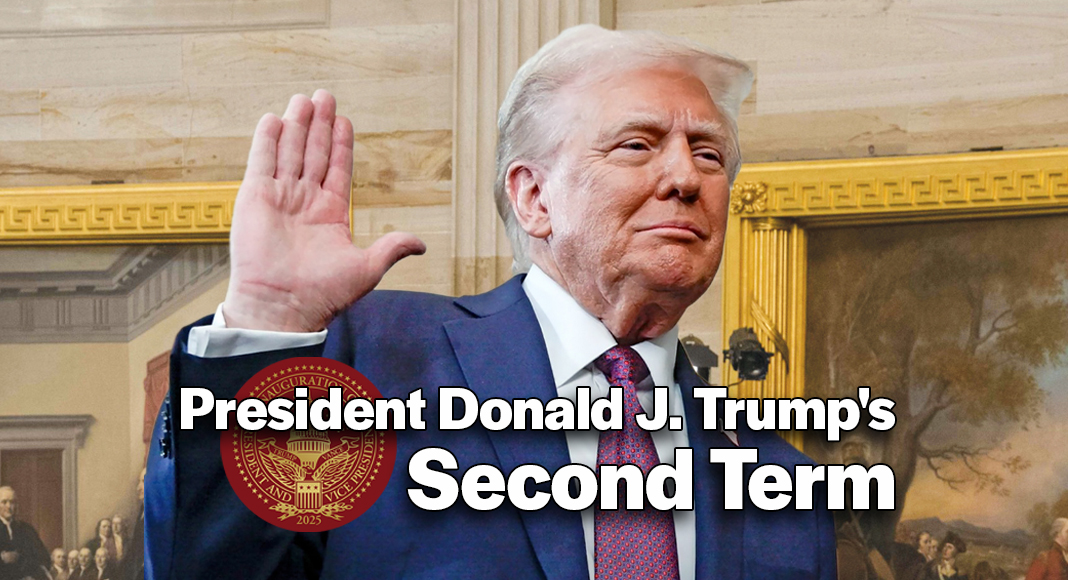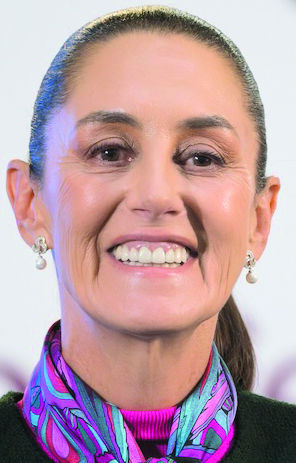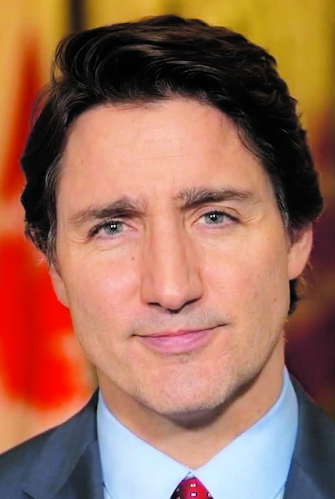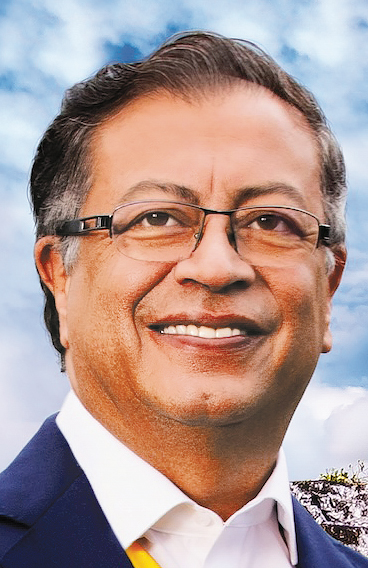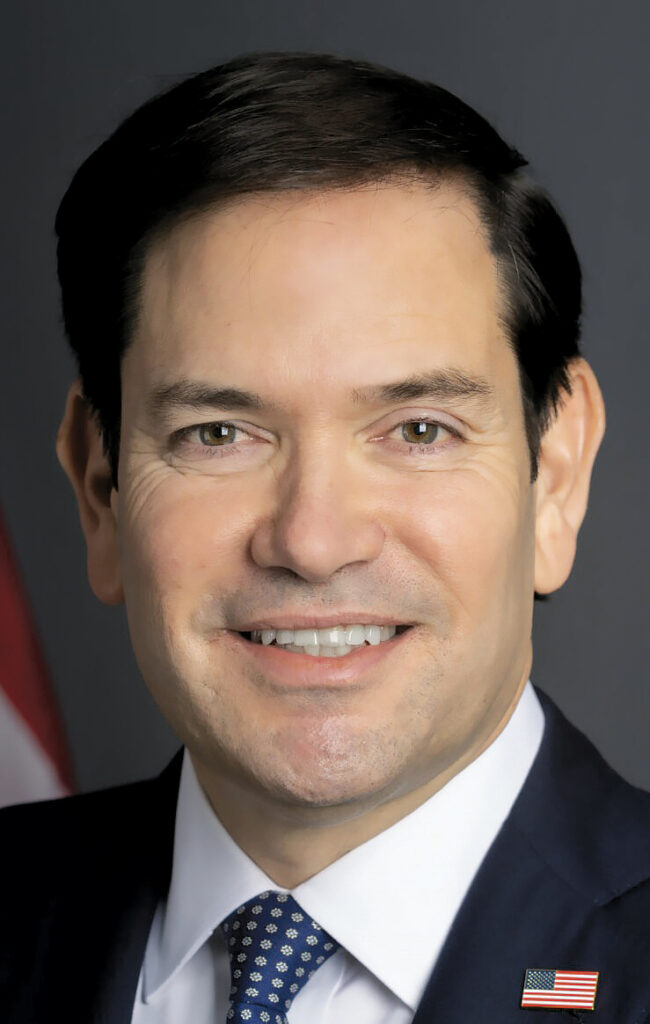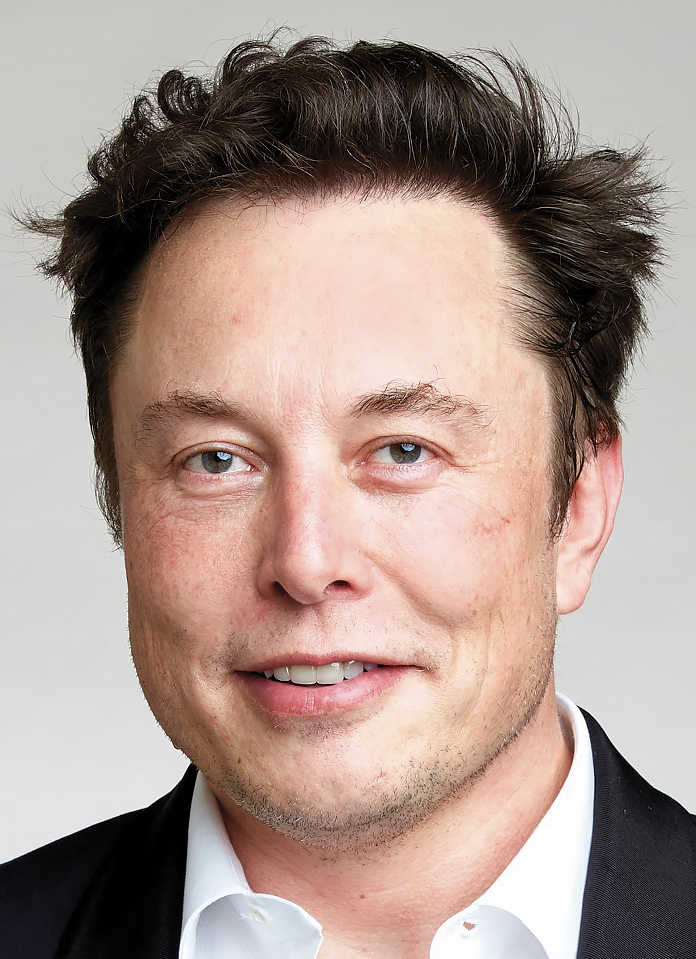Texas Border Business
By Roberto Hugo González
On January 20, 2025, Donald J. Trump was inaugurated as the 47th President of the United States, marking the beginning of his second term. Immediately after taking the oath of office, President Trump initiated a series of executive actions to reshape domestic policies and assert U.S. interests on the global stage.
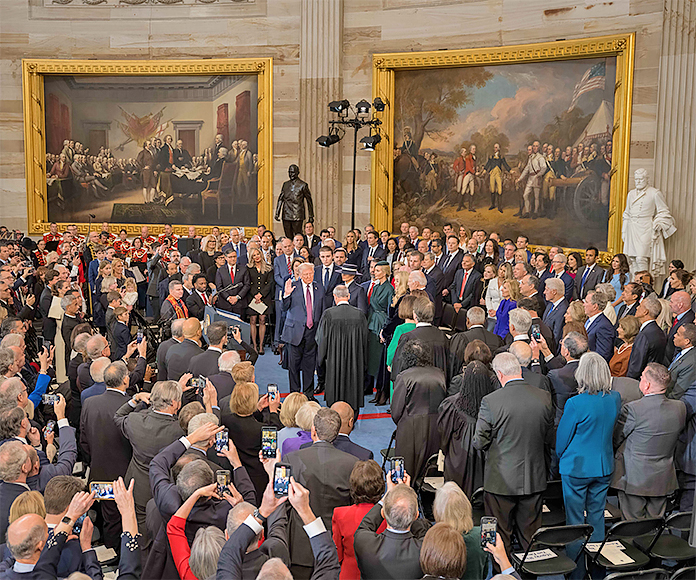
Executive Orders Signed on Inauguration Day
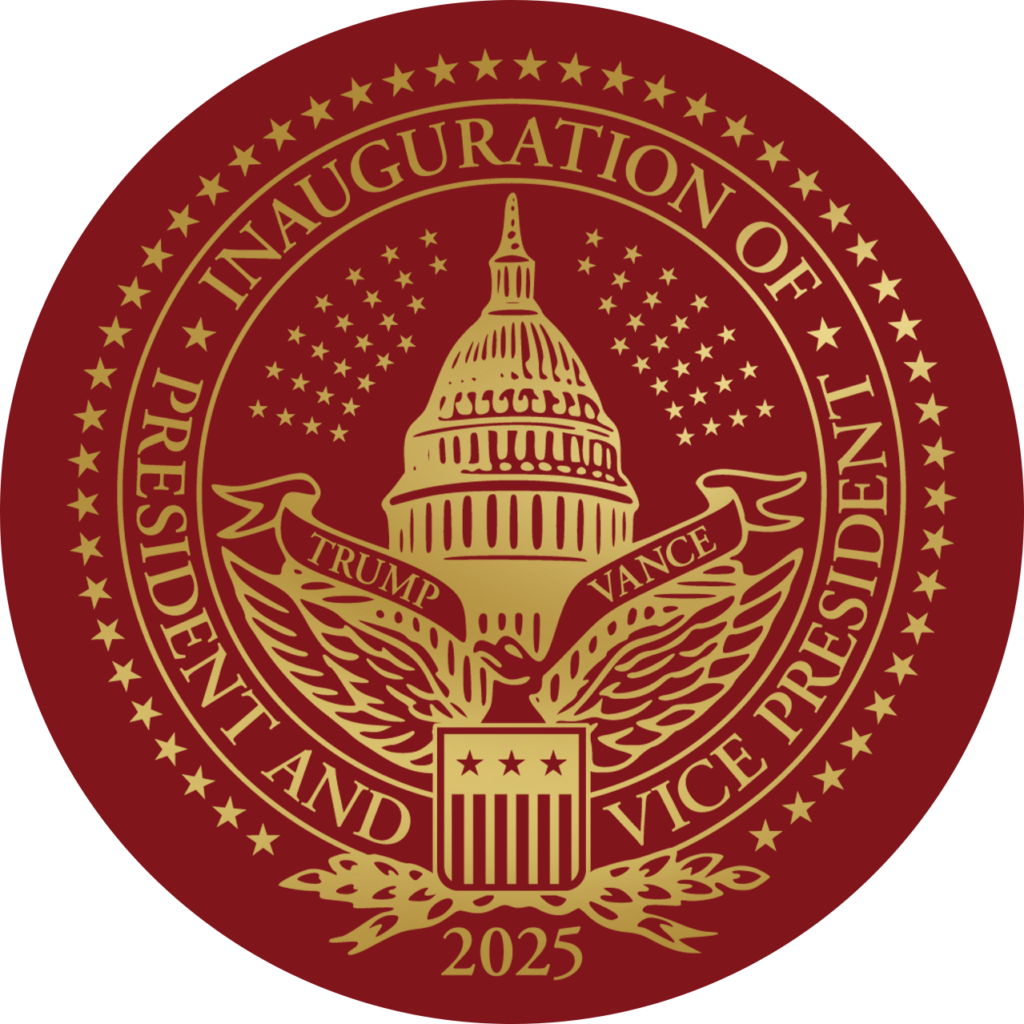
On his first day back in office, President Trump signed numerous executive orders targeting key areas such as immigration, trade, energy, and federal workforce policies.
In the days following his inauguration, President Trump continued to issue executive orders, bringing the total to 44 by January 30, 2025. These directives encompassed many policy areas, reflecting the administration’s priorities.
Beyond the numerous executive orders, the Trump administration has actively engaged in significant policy initiatives and geopolitical maneuvers, particularly concerning Latin America.
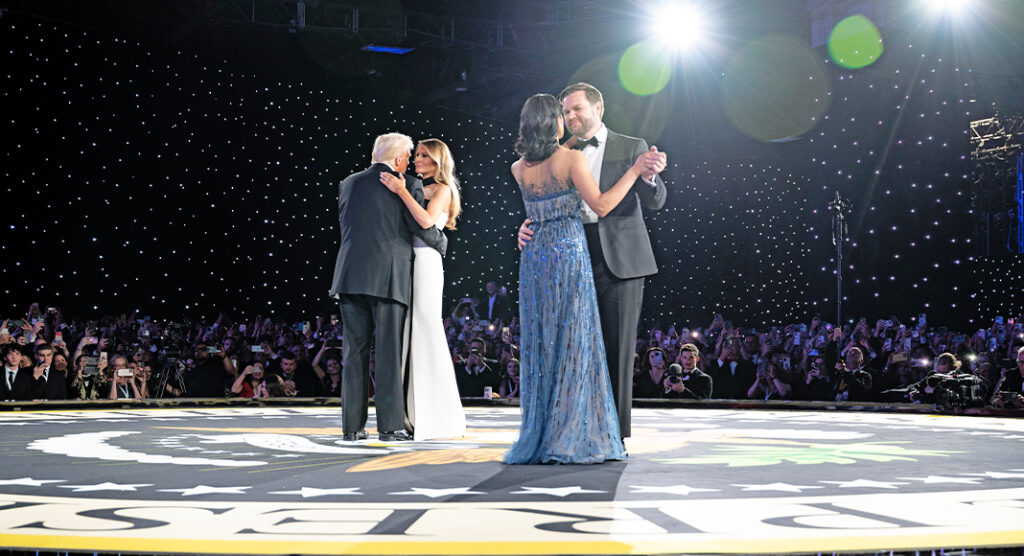
Venezuela: A Major Diplomatic Victory for President Trump

One of President Trump’s earliest foreign policy wins in his second term was securing Venezuela’s agreement to accept deported nationals and the release of six American detainees. This landmark deal, reached through direct negotiations with President Nicolás Maduro, marked a shift in U.S.-Venezuela relations and reinforced Trump’s hardline immigration and diplomatic strategy.
For years, Venezuela refused to accept its deported citizens, creating a major immigration challenge for the U.S. Trump leveraged economic pressure and diplomacy to force compliance, securing Venezuela’s cooperation in accepting deportees in exchange for a limited review of certain economic sanctions.
This victory addressed the growing Venezuelan migrant crisis at the U.S.-Mexico border and strengthened Trump’s stance on border security, demonstrating his administration’s ability to extract concessions from adversarial regimes.
Alongside the immigration deal, six Americans imprisoned in Venezuela were released after years of diplomatic deadlock. Their return allowed Trump to claim a major humanitarian and geopolitical win, reinforcing his image as a tough but effective negotiator.
While the deal did not entirely lift sanctions, it opened pathways for future economic engagement, signaling potential shifts in U.S.-Venezuela relations. Faced with domestic economic struggles, Maduro reluctantly engaged with Trump, hinting at possible further cooperation.
The U.S.-Venezuela deals reinforced Trump’s image as a decisive leader, achieving dual success in immigration enforcement and foreign diplomacy. It also set a precedent, demonstrating that even hostile regimes could be pressured into compliance, a major early win for Trump’s administration.
Mexico: Tariffs and Border Security Cooperation
One of the most significant early moves in President Trump’s second term has been his strong stance on border security and trade relations with Mexico. As part of his broader strategy to curb illegal immigration and halt the flow of fentanyl into the United States, his administration imposed a 25% tariff on Mexican imports, a move designed to pressure the Mexican government into taking more decisive action against drug cartels and migrant caravans.
Initially, Mexico’s government and business sectors resisted the tariff, as the country heavily depended on exports to the U.S. However, an unprecedented agreement was reached after high-level negotiations between President Trump’s administration and Mexican President Claudia Sheinbaum.
In a historic move, President Sheinbaum agreed to deploy 10,000 Mexican troops to the U.S.-Mexico border to prevent illegal immigration and crack down on fentanyl smuggling networks. This decision marks a significant shift in Mexico’s immigration policy, demonstrating increased cooperation between the two nations in addressing border security.
Mexican officials also pledged to intensify counter-narcotics efforts, with the military taking on a more significant role in disrupting cartel supply chains. The agreement involves closer intelligence-sharing between U.S. and Mexican law enforcement agencies, focusing on identifying and dismantling fentanyl production labs across Mexico.
So far, Mexican troops have not been deployed since this agreement was made on Monday, February 3, 2025. When it’s done, it is expected that there will be a noticeable decline in migrant crossings and drug seizures at key border points.
This development is one of the most significant geopolitical wins for the Trump administration in its early days. It marks a significant concession from the Mexican government in an area that has long been a contentious issue between the two nations. With Mexico now taking a more active role in controlling migration and drug trafficking, the U.S. government views this as a step forward in restoring law and order at the southern border.
Colombia: Trump’s Diplomatic Standoff with President Petro
One of President Trump’s first major foreign policy confrontations in his second term was a diplomatic standoff with Colombian President Gustavo Petro over the deportation of undocumented Colombian nationals from the U.S. Trump’s executive order mandated their immediate repatriation. Still, Petro refused, calling it “inhumane” and accusing the U.S. of turning Colombia into a “dumping ground.”
Enraged by Petro’s defiance, Trump threatened severe economic penalties, including:
- A 30% tariff on Colombian exports (coffee, flowers, textiles).
- Suspension of U.S. aid programs (including counter-narcotics funding).
- Revocation of Colombia’s preferential trade status under the U.S.-Colombia Free Trade Agreement.
As Colombia’s economy faced turmoil, business leaders pressured Petro to reconsider his stance. After intense negotiations and a direct ultimatum from Trump, Petro relented. Colombia agreed to accept deportees under a bilateral agreement ensuring criminal monitoring upon arrival.
The fallout damaged U.S.-Colombia relations, with Petro’s supporters accusing him of surrendering to Trump’s pressure. Meanwhile, Trump celebrated the victory as a warning to other nations: “If you don’t take back your citizens, you will pay the price.”
Despite initial resistance, Petro also agreed to expand anti-narcotics operations, further aligning with Trump’s security agenda. The episode highlighted Trump’s aggressive use of economic leverage to enforce immigration policies and reshape U.S.-Latin America relations in the opening days of his second term.
Reevaluating and Realigning United States Foreign Aid
On January 20, 2025, President Donald Trump signed an executive order titled “Reevaluating and Realigning United States Foreign Aid,” initiating a 90-day suspension of all U.S. foreign development assistance programs to conduct a comprehensive review.
In the days following the executive order, Secretary of State Marco Rubio implemented the suspension by issuing “stop-work” orders for existing foreign assistance and pausing new aid commitments. Initially, exemptions were limited to emergency food assistance and military aid to Egypt and Israel.
Concurrently, Elon Musk, appointed by President Trump to lead a federal cost-cutting initiative, announced efforts to dismantle the U.S. Agency for International Development (USAID), describing it as irreparable. This move resulted in the temporary closure of USAID’s headquarters, staff lockout, and suspension of numerous aid programs.
Hostages-Hamas-Gaza
In the months leading up to his inauguration on January 20, 2025, President-elect Donald Trump took a proactive stance on the hostage crisis involving American citizens held by Hamas in Gaza. He issued stern warnings to Hamas, stating that failure to release the hostages before his inauguration would result in severe consequences. This assertive approach was intended to pressure Hamas into compliance and expedite the safe return of the captives.
In January 2025, a significant breakthrough occurred when Hamas agreed to a ceasefire and the release of several hostages, including American Israeli dual citizen Keith Siegel, who had been held captive for nearly 500 days. This development was part of a broader ceasefire agreement brokered with the involvement of the outgoing and incoming U.S. administrations and international mediators. Siegel’s family expressed deep gratitude to President Trump and the Israeli government for securing his release.
Following his inauguration, President Trump continued to prioritize the resolution of the hostage situation. He appointed Steven Witkoff as his Middle East envoy to lead negotiations to secure the release of remaining hostages. Witkoff engaged in discussions with Israeli officials and the families of captives, emphasizing the administration’s commitment to bringing all hostages home. These efforts accentuated the administration’s dedication to resolving the crisis and highlighted the complexities involved in negotiating with militant groups like Hamas.
In early February 2025, President Donald Trump and Canadian Prime Minister Justin Trudeau reached an agreement to temporarily suspend the implementation of 25% tariffs on each other’s imports for 30 days. This decision followed two phone calls between the leaders, during which Canada committed to deploying troops to its northern border and enhancing measures to combat fentanyl smuggling. As part of the agreement, Canada will implement a $1.3 billion border security plan, which includes new helicopters, technology, additional personnel, and increased coordination with U.S. authorities. Furthermore, Canada will appoint a “Fentanyl Czar,” classify cartels as terrorist organizations, and establish a joint task force with the U.S. to address organized crime and drug trafficking.
This development mirrors a similar arrangement between the U.S. and Mexico, where Mexican President Claudia Sheinbaum agreed to deploy 10,000 troops to the U.S.-Mexico border to enhance security and address drug trafficking concerns. These agreements have temporarily averted the immediate economic impacts of the proposed tariffs, providing a window for further negotiations to finalize border security measures. The 30-day suspension allows all parties to work towards long-term solutions to shared challenges, including illegal immigration and the flow of illicit drugs into the United States.
The events of President Trump’s second term continue to unfold in real-time, shaping both domestic policy and global relations with each decisive move. From securing border agreements with Mexico and Canada to leveraging economic pressure on Latin American nations, his administration is relentlessly pursuing its agenda with a mix of aggressive diplomacy and executive authority. As the world watches, new geopolitical challenges and negotiations lie ahead, with looming trade talks, ongoing immigration battles, and complex security concerns still in flux. The future remains uncertain, but one thing is clear—Trump’s second term is a period of bold action, high-stakes diplomacy, and relentless policy shifts that will leave a lasting imprint on the United States and its global standing. There is more to come; this story does not end here. “You’re going to get tired of winning,” declared President Donald J. Trump.
See related story:







